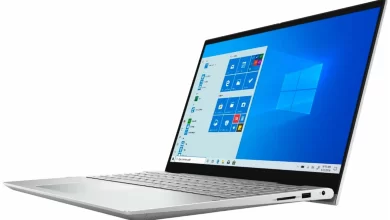How to Choose the Right Laptop for Photo Editing in 2025

Selecting the right computer for photo editing is a critical decision for photographers, graphic designers, and creative professionals. The wrong choice can lead to sluggish performance, frustrating workflows, and compromised image quality.
A well-suited machine, whether a desktop or a laptop for photo editing, enhances efficiency, supports demanding software, and ensures your creative vision comes to life seamlessly.
This guide dives into the essential components, technical considerations, and actionable steps to help you choose a computer tailored to your photo editing needs.
Understanding Photo Editing Demands
Photo editing software, such as Adobe Photoshop, Lightroom, or Capture One, places significant demands on a computer’s hardware.
Image Source: Yandex
These programs require robust processing power, ample memory, and high-quality displays to handle tasks like rendering high-resolution images, applying complex filters, and managing large file sizes so you might need a good laptop for photo editing or even a PC.
Whether you’re adjusting RAW files, retouching portraits, or creating intricate composites, your computer must keep up without lag or crashes. Let’s break down the key components to prioritize.
1. Processor (CPU): The Heart of Performance
The processor is the backbone of any computer used for photo editing. It handles calculations for rendering images, applying effects, and running multiple tasks simultaneously.
For photo editing, opt for a multi-core processor with high clock speeds (measured in GHz). A CPU with at least four cores and eight threads is ideal for most editing tasks, as it supports multitasking and speeds up processes like batch editing or exporting large files.
For professionals working with high-resolution images or 3D rendering, a processor with six or more cores provides additional power. Ensure the CPU supports hyper-threading, which allows each core to handle multiple tasks, improving efficiency.
When choosing a laptop for photo editing, prioritize newer-generation processors, as they offer better performance and energy efficiency, crucial for portable workflows.
Actionable Step: Check the processor’s core count, thread count, and clock speed. Look for terms like “quad-core” or “hexa-core” and aim for a base clock speed above 3.0 GHz for optimal performance.
2. Graphics Card (GPU): Enhancing Visual Processing
While the CPU handles general computing, a dedicated graphics card accelerates tasks like rendering previews, applying GPU-accelerated effects, and working with high-resolution displays.
For photo editing, a mid-range dedicated GPU is often sufficient, as most software relies more on the CPU. However, if you work with 4K or 8K images, panoramas, or video editing alongside photos, a more powerful GPU will reduce rendering times.
Integrated GPUs, found in many laptops for photo editing, have improved significantly and can handle basic to moderate editing tasks. However, a dedicated GPU with at least 4GB of VRAM is recommended for professionals tackling complex projects.
Ensure the GPU supports modern APIs like OpenCL or CUDA, which are used by popular editing software.
Actionable Step: Verify whether the software you use supports GPU acceleration. If it does, prioritize a dedicated GPU with at least 4GB VRAM for smoother performance.
3. RAM: Fueling Multitasking
Random Access Memory (RAM) determines how much data your computer can handle at once. Photo editing software often requires significant RAM, especially when working with large files or multiple images simultaneously.
A minimum of 16GB is recommended for most users, but 32GB or more is ideal for professionals handling RAW files or multilayered projects.
When selecting a laptop for photo editing, check if the RAM is upgradeable, as some models have soldered memory that cannot be expanded. Higher RAM speeds (measured in MHz) also improve performance, so aim for 3200 MHz or faster if possible.
Actionable Step: Start with 16GB of RAM for basic editing or 32GB for professional workflows. Confirm that the computer allows RAM upgrades if you anticipate future needs.
4. Storage: Balancing Speed and Capacity
Storage impacts both the speed of accessing files and the capacity to store large image libraries. Solid State Drives (SSDs) are essential for photo editing due to their fast read and write speeds, which reduce loading times for software and files.
A minimum of 512GB SSD storage is recommended, but 1TB or more is better for professionals with extensive libraries.
For laptops for photo editing, consider models with dual storage options (SSD for speed, HDD for capacity) if you need both performance and space. NVMe SSDs are faster than SATA SSDs, offering quicker file transfers and boot times.
Ensure you have enough storage for your operating system, software, and image files, as RAW files can quickly consume space.
Actionable Step: Choose a computer with at least a 512GB NVMe SSD. If budget allows, opt for 1TB or supplement with external drives for archiving.
5. Display: Accuracy Is Key
A high-quality display is non-negotiable for photo editing, as it directly affects color accuracy and detail visibility. Look for a screen with at least Full HD (1920×1080) resolution, though 4K (3840×2160) is ideal for working with high-resolution images.
IPS panels are preferred for their wide viewing angles and accurate colors compared to TN or VA panels.
Color accuracy is critical, so choose a display covering at least 100% of the sRGB color gamut, with support for AdobeRGB or DCI-P3 for professional work. A brightness of 300 nits or higher ensures visibility in various lighting conditions.
For laptops for photo editing, ensure the screen is factory-calibrated or invest in a calibration tool to maintain accuracy.
Actionable Step: Test the display’s color gamut and resolution in-store if possible. Use a calibration tool like a colorimeter to ensure consistent color accuracy.
6. Portability vs. Power: Desktop or Laptop?
Deciding between a desktop and a laptop for photo editing depends on your workflow. Desktops offer superior power, upgradeability, and larger displays, making them ideal for studio-based professionals.
They also allow for custom cooling solutions, which prevent thermal throttling during intensive tasks.
Laptops for photo editing provide portability, which is essential for photographers working on location or traveling.
However, they often compromise on power and upgradeability. When choosing a laptop, prioritize models with efficient cooling systems and battery life to support extended editing sessions.
Actionable Step: Assess your mobility needs. If you work in a fixed location, a desktop offers better value. For travel, choose a laptop with a balance of power and portability.
7. Operating System: Compatibility Matters
The operating system (OS) affects software compatibility and user experience. Windows offers broad software support and hardware flexibility, making it a popular choice for photo editors. macOS is favored for its optimized performance with creative software and high-quality Retina displays, especially on laptops for photo editing. Linux is less common but viable for users comfortable with open-source tools.
Ensure your chosen OS supports your preferred editing software and peripherals like graphics tablets or external monitors.
Actionable Step: Confirm that your editing software runs smoothly on your chosen OS. Test compatibility with any specialized hardware you use.
8. Connectivity and Ports
Photo editors often rely on peripherals like card readers, external drives, and monitors. Ensure your computer has sufficient ports, such as USB-A, USB-C, Thunderbolt, or HDMI.
Laptops for photo editing should have at least one USB-C port for fast data transfer and charging. An SD card slot is a bonus for photographers.
Actionable Step: Make a list of your peripherals and verify that the computer has compatible ports or invest in a docking station.
Final Thoughts
Choosing the right computer for photo editing requires careful consideration of your workflow, software, and budget.
By prioritizing a powerful CPU, sufficient RAM, fast storage, and a color-accurate display, you can build a system that enhances your creativity and productivity.
Whether you opt for a desktop or a laptop for photo editing, ensure the machine aligns with your specific needs and offers room for future upgrades.




